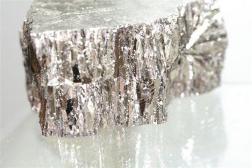Low temperature alloys, which typically contain indium or bismuth, melt at temperatures less than 180°C. These low-melting alloys are required for a wide variety of applications, including:
- Step soldering involving temperature sensitive components
- Soldering to molded interconnect device (MID) plastics
- Fusible alloys/fuse applications
- Mercury replacement
- Thermal and electrical conductivity
Step Soldering Involving Temperature Sensitive Components
Step soldering is the process of attaching components to a substrate in a series of steps where each step in the soldering process uses a lower reflow temperature than the step before it. Standard components are attached first and then temperature sensitive components (like LEDs) are done last. These temperature sensitive components reflow at temperatures less than 180°C.
Soldering To MID Plastics
Molded interconnect device (MID) plastics have been around for many years, but are becoming more popular in product design. MID plastics, which are formed into 3D shapes to increase the functionality and reduce overall weight of each product, are important in automotive and medical applications.
Fusible Alloys/Fuse Applications
Fusible alloys are valued for their relatively low-temperature melting point precision, as well as for their physical properties at room temperature.
Fusible alloys can be used for:
- Fuses
- Tube bending
- Lens blocking
- Wax pattern dies
- Potting molds
- Punch anchoring
Properties
| Property | Indalloy | |||||
|---|---|---|---|---|---|---|
| 117 | 158 | 160-190 | 217-440 | 255 | 281 | |
| Melting Point or Range Deg/F | 117 | 158 | 160-190 | 217-440 | 255 | 281 |
| Weight lbs/in3 | .32 | .339 | .341 | .343 | .380 | .315 |
| Tensile Strength lbs/in2 | 5,400 | 5,990 | 5,400 | 13,000 | 6,400 | 8,000 |
| Brinell Hardness No. | 12 | 9.2 | 9 | .19 | 10.2 | 22 |
| Maximum Load 30 sec lbs/in2 |
— | 10,000 | 9,000 | 16,000 | 8,000 | 15,000 |
| Safe Load Sustained | — | 300 | 300 | 300 | 300 | 500 |
| Conductivity (Electrical) Compared with Pure Copper | 3.34% | 4.17% | 4.27% | 2.57% | 1.75% | 5.00% |
| Cumulative Growth and Shrinkage Time after Casting | ||||||
| 2 min. | +.0005 | +.0025 | -.0004 | +.0008 | -.0008 | +.0007 |
| 6 min. | +.0002 | +.0027 | -.0007 | +.0014 | -.0011 | +.0007 |
| 30 min. | .0000 | +.0045 | -.0009 | +.0047 | -.0010 | +.0006 |
| 1 hr. | -.0001 | +.0051 | .0000 | +.0048 | -.0008 | +.0006 |
| 2 hr. | -.0002 | +.0051 | +.0016 | +.0048 | -.0004 | +.0006 |
| 5 hr. | -.0002 | +.0051 | +.0018 | +.0049 | .0000 | +.0005 |
| 500 hr. | -.0002 | +.0057 | +.0025 | +.0061 | +.0022 | +.0005 |
Mercury Replacement
Indium Corporation manufactures several alloys that have very low-melting points. These liquid-at-room-temperature alloys are finding increased uses in various applications as a replacement for the more toxic mercury. In addition, the vapor pressures of these alloys are substantially lower than mercury.
Thermal and Electrical Conductivity
Alloy systems that are liquid at room temperature have a high degree of thermal conductivity, far superior than ordinary non-metallic liquids. This allows for the use of these materials in specific heat-conducting applications, such as the heat dissipation of sensitive components during operation, machining, and/or manufacturing.
Other advantages of these liquid alloy systems are their inherent high densities and electrical conductivities. Typical applications for these materials include thermostats, switches, barometers, heat transfer systems, and thermal cooling and heating designs.
The table below lists available Indalloy® alloys which are liquid at room temperature.
| Indalloy Number |
Liquidus C | Solidus C | Composition | Density lb/in3 |
Specific Gravity gm/cm3 |
Thermal Conductivity (W/mK) |
Electrical Resistivity (10-8Ω-m) |
|---|---|---|---|---|---|---|---|
| 46L | 7.6 | 6.5 | 61.0Ga / 25.0In / 13.0Sn / 1.0Zn | 0.2348 | 6.50 | 15* | 33* |
| 51E | 10.7 | 10.7 | 66.5Ga / 20.5In / 13.0Sn | 0.2348 | 6.50 | 16.51 | 28.91 |
| 51 | 16.3 | 10.7 | 62.5Ga / 21.5In / 16.0Sn | 0.2348 | 6.50 | 16.51 | 28.91 |
| 60 | 15.7 | 15.7 | 75.5Ga / 24.5In | 0.2294 | 6.35 | 20* | 29.42 |
| 77 | 25.0 | 15.7 | 95Ga/5In | 0.2220 | 6.15 | 25* | 20* |
| 14 | 29.78 | 29.78 | 100Ga | 0.2131 | 5.904 | 28.13 | 14.854 |
References:
Liquid metal alloys are shipped in polyethylene bottles.
Storage/Shelf Life for Liquid Metal Alloys
Unopened bottles have a guaranteed shelf life of one year. It is recommended that the volume be replaced with dry argon as the material is removed from the bottle. This will minimize any possibility of oxidation on the surface of the alloy. If the alloy has been stored below its melting point and has solidified, it should be remelted and thoroughly shaken or mixed before use.
 bismuth low-temperature melt solder
bismuth low-temperature melt solder
Source: Carol Gowan, Indium Solder Co.
This entry was posted on Friday, August 21st, 2015 at 4:50 pm and is filed under Solder, Soldering and Rework. You can follow any responses to this entry through the RSS 2.0 feed. Both comments and pings are currently closed.